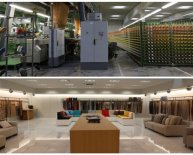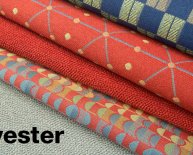
Environmental impact of polyester
Different fabrics have different impacts, depending on what they’re made of:
Nylon and polyester
Made from petrochemicals, these synthetics are non-biodegradable as well, so they are inherently unsustainable on two counts. Nylon manufacture creates nitrous oxide, a greenhouse gas 310 times more potent than carbon dioxide. Making polyester uses large amounts of water for cooling, along with lubricants which can become a source of contamination. Both processes are also very energy-hungry.
Rayon (viscose)
This is another artificial fibre, made from wood pulp, which on the face of it seems more sustainable. However, old growth forest is often cleared and/or subsistence farmers are displaced to make way for pulpwood plantations. Often the tree planted is eucalyptus, which draws up phenomenal amounts of water, causing problems in sensitive regions. To make rayon, the wood pulp is treated with hazardous chemicals such as caustic soda and sulphuric acid.
Cotton
Natural fibres have their problems, too. Cotton is : these pesticides injure and kill many people every year. It also takes up a large proportion of agricultural land, much of which is needed by local people to grow their own food. Herbicides, and also the chemical defoliants which are sometimes used to aid mechanical cotton harvesting, add to the toll on both the environment and human health. These chemicals typically remain in the fabric after finishing, and are released during the lifetime of the garments. The development of genetically modified cotton adds environmental problems at another level. is quite another matter.
Wool
Both agricultural and craft workers in the UK suffer from exposure to .
Manufacturing processes
Getting from fibre to cloth – bleaching, dyeing, and finishing – uses yet more energy and water, and causes yet more pollution.
- Dyeing alone can account for most of the water used in producing a garment; unfixed dye then often washes out of garments, and can end up colouring the rivers, as treatment plants fail to remove them from the water. Dye fixatives – often heavy metals – also end up in sewers and then rivers.
- Cloth is often bleached using dioxin-producing chlorine compounds.
- And virtually all polycotton (especially bedlinen), plus all ‘easy care’, ‘crease resistant’, ‘permanent press’ cotton, are treated with toxic formaldehyde (also used for flameproofing nylon).
Other materials
Other materials used in clothing and shoes include:
- Leather (with polluting tanning and dyeing processes, as well as intensive farming impacts and animal rights issues).
- Harmful solvents – used e.g. in glues and to stick plastic coatings to some waterproof fabrics.

















